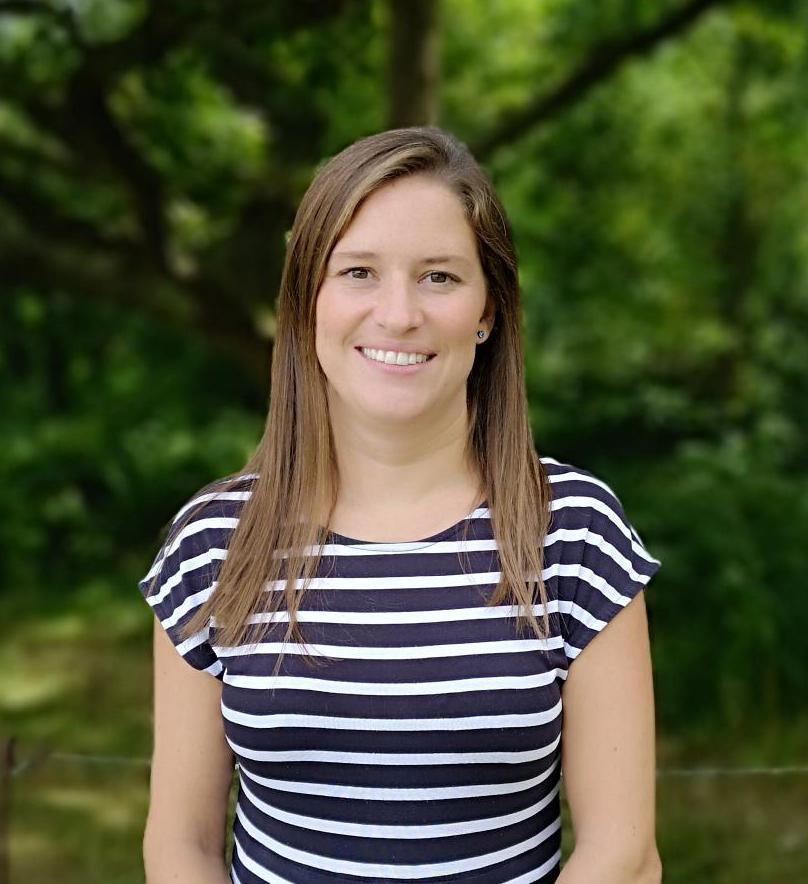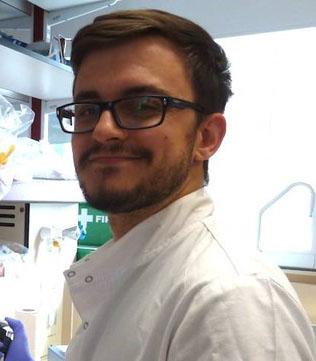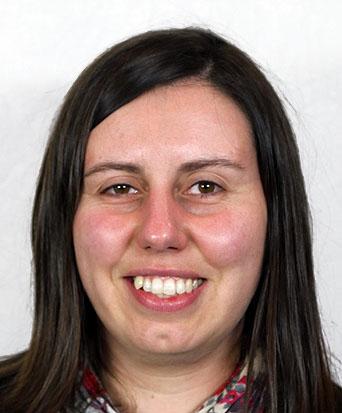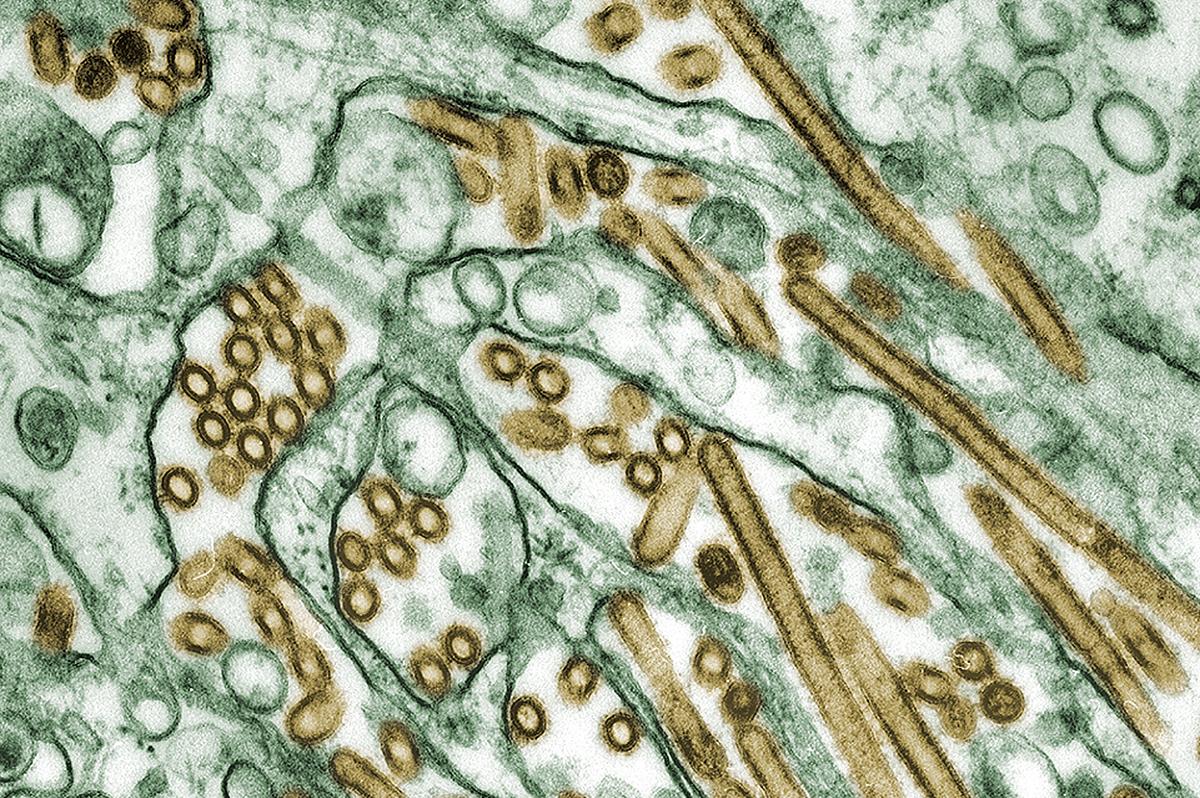Say hello to three new Fellows at The Pirbright Institute, discover their journey to joining the organisation and find out what research their new groups will be undertaking.
Dr Marion England - Vector Ecology
 Tell us about your career before you were made a Fellow at Pirbright
Tell us about your career before you were made a Fellow at Pirbright

My PhD, which I completed in 2013, looked at the spatial risk assessment of vector-borne diseases. After this, I began working at Pirbright as a Postdoctoral Researcher in the Entomology group and was promoted to a Senior Postdoc in 2020. Shortly after this, I moved across to the Transmission Biology group.
What will your research group be working on?
The Vector Ecology group researches viral vectors, with a focus on Culicoides biting midges, which can transmit viruses of medical and veterinary importance, such as bluetongue virus. Our work encompasses various aspects, including investigating midge behaviour, the effects of climate change on their distribution and abundance, and how these factors impact disease transmission. We plan to explore new technologies, such as AI to further enhance our understanding of vector ecology.
What are you most looking forward to in this new role?
I’m really excited to be building up my own research group, as it will allow me to expand my portfolio of scientific work and delve deeper into the areas that I’m really interested in, where data are currently lacking.
Dr Thomas Peacock - Zoonotic Influenza Viruses
Tell us about your career before you were made a Fellow at Pirbright


I completed my PhD working on avian influenza virus between The Pirbright Institute and Imperial College London in 2016, supervised by Professor Munir Iqbal and Professor Wendy Barclay.
I then briefly worked at UCL on HIV and innate immune sensing in the laboratory of Greg Towers before moving to Imperial College in 2018 to again work for Professor Wendy Barclay. During this postdoc, I initially worked on cross-species adaptation of influenza viruses before starting work on the evolution and adaptation of SARS-CoV-2 during the pandemic, chiefly as a member of the UK-G2P virology consortium. Also during the pandemic, I was seconded part-time to UKHSA as an advisor on SARS-CoV-2 variants.
Most recently, I’ve been heavily involved with the FLUMAP consortium, investigating the drivers of the current H5N1 avian influenza panzootic – our specific focus of which has been the role of the influenza polymerase.
What will your research group be working on?
I plan to study the drivers behind cross-species adaptation of influenza viruses, with a particular focus on evolution of poultry and swine adaptation of avian influenza viruses and how this relates to zoonotic and pandemic potential in humans. Specifically, I plan to investigate changes in properties of these viruses such as preference for modified sugar receptors, differential activating protease preference for viral glycoproteins, and stability in relation to efficient airborne transmission and pathogenicity.
What are you most looking forward to in this new role?
Pirbright has some unique facilities and opportunities, additionally this is a great opportunity to work on, and collaborate with groups working on some fascinating and unusual viruses, many of which are not very well understood and have fundamental questions remaining about. Very few places in the UK can boast such a large and diverge group of virologists making it a great environment to start a new group.
Dr Ana Reis - African Swine Fever Virus Immune Evasion
 Tell us about your career before you were made a Fellow at Pirbright
Tell us about your career before you were made a Fellow at Pirbright

I obtained my undergraduate degree in Veterinary Medicine from the Universidade do Porto, Portugal in 2001. There, I developed an interest in disease pathogenesis, which led me to apply for a residency at the Veterinary Pathology Laboratory, where I worked for six months.
In 2002, I started a PhD under the supervision of Dr Michael Parkhouse at the Instituto Gulbenkian de Ciência, Portugal. My project was focused on the modulation of innate immune responses by African Swine Fever Virus (ASFV) and the development of new diagnostic tools.
I continued working on viral evasion of the host immune responses as a career development fellow (2008) under the supervision of Dr John McCauley at the National Institute for Medical Research, UK (now part of the Francis Crick Institute). The main topic of my research was the identification of mechanisms employed by Influenza A viruses to manipulate NF-κB signalling and ultimately modify the host inflammatory response.
I joined the Pirbright Institute in 2012 to cover maternity leave andsince then, I have remained with the Institute! My initial project, led by Drs Geraldine Taylor and Karin Darpel, was aimed at understanding the effect of T-cell depletion on bluetongue virus infection in calves.
Over the past 10 years, I have worked in the ASF Virus group, led by Dr Linda Dixon. Building on my previous experience in cell signalling, and particularly in how viruses evolved to modify cellular pathways for their own benefit, my work was mainly devoted to improving our understanding on how ASFV impacts host immune responses and applying this knowledge to the development of live attenuated vaccines.
What will your research group be working on?
Highly virulent ASFV isolates cause a severe hemorrhagic syndrome, with lethality rates approaching 100%. However, less well known are other forms of the disease, including a chronic form characterized by arthritis, necrotic skin lesions and lung pathology often associated with secondary bacterial infections. The viral proteins involved in the development of these different disease types and their mechanisms of action are poorly understood.
The acute form of ASF is likely to result from the inability of the pig cells to control virus replication. Therefore, viral proteins evading intrinsic/innate immunity, including interferon and inflammation, are of particular interest to understand virulence.
On the other hand, the chronic disease is probably associated with dysregulation of the host immune response. This may involve not only dysregulation of cytokine signaling pathways, but also manipulation of cellular responses, such as the ones mediated by NK cells and T and B lymphocytes. As a result, ASFV proteins expressed at the cell surface, capable of interacting with receptors in these immune cells, may play a role here.
The main objective of my group is to identify and characterize interactions between ASFV proteins and host cells, both infected and bystander, in vitro. This fundamental knowledge will help us to understand mechanisms of attenuation and pathogenesis in vivo, which is essential for developing ASF control strategies, such as vaccines and antivirals.
What are you most looking forward to in this new role?
I will digress a bit here and quote one of my favourite novels by the Brazilian author João Guimarães Rosa: “Vivendo, se aprende; mas o que se aprende, mais, é só a fazer outras maiores perguntas.” This roughly translates to: “By living, you learn; but what you learn, mostly, is just asking other bigger questions”. I am looking forward to those bigger questions!
